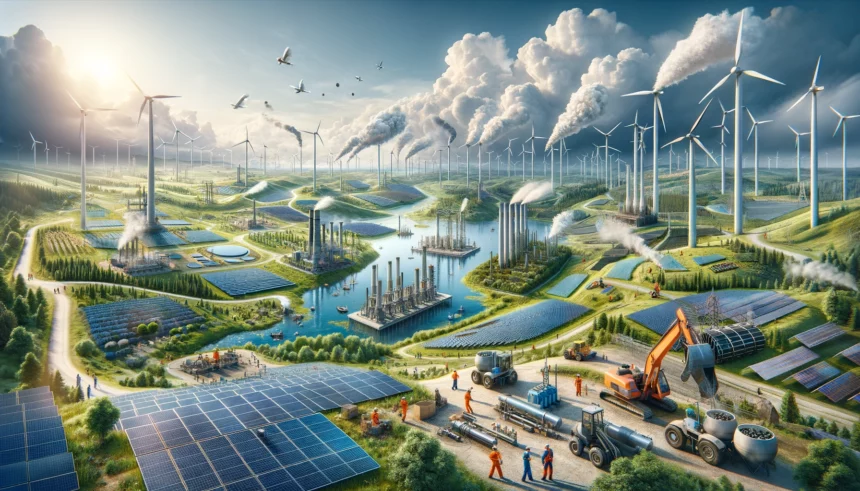The world is at a crucial point in the fight against climate change. Our heavy reliance on fossil fuels has led to a concerning rise in greenhouse gas emissions, driving global warming. However, the horizon looks hopeful with innovations in renewable energy technologies. Solar, wind, and other sustainable energy sources are gaining momentum and reshaping the global energy landscape.
Solar Energy: Shining Brighter Than Ever
Advancements in Solar Panels
- Perovskite Materials: New solar panels are incorporating perovskite materials, achieving efficiency rates greater than 25%, compared to the 15-18% of traditional panels.
- Concentrated Solar Power (CSP): This technology uses mirrors to focus sunlight onto a single point to generate heat, which can be stored and used to produce electricity even when the sun isn’t shining.
- Floating Solar Systems: Installed on bodies of water like lakes and reservoirs, these systems save space and increase efficiency by reducing water evaporation and keeping panels cool.
Wind Energy: Catching More Breeze
Modern Wind Turbines
- Larger and More Efficient: Today’s turbines are over 200 meters tall with blades exceeding 100 meters, capturing more wind energy.
- Improved Design: Advances have made turbines quieter and less impactful on the environment.
- Offshore Wind Farms: Utilizing strong, consistent ocean winds, these farms are highly effective. Floating turbine technology allows for installations in deep waters, generating significant energy without competing for land space.
- Domestic Wind Turbines and Microgrids: These enable households and communities to generate their own electricity, decentralizing energy production and increasing grid resilience.
Diverse Renewable Sources: Beyond Solar and Wind
Geothermal Energy
- Consistent Energy Source: Geothermal plants harness the Earth’s internal heat, providing a reliable energy supply regardless of weather conditions.
- Innovations in Drilling: New drilling and exploration technologies are making geothermal energy more accessible and cost-effective.
Bioenergy
- Organic Material Utilization: Derived from agricultural and forestry waste, bioenergy helps manage waste while providing renewable energy.
- Biofuels and Biomass: These can replace fossil fuels in transportation and heating, reducing carbon emissions.
Small-scale Hydropower
- Mini-Hydro Systems: Ideal for remote communities, these systems generate energy with minimal environmental impact.
The Positive Impact of Renewable Energy
Environmental Benefits
- Reducing Emissions: Renewables significantly cut down CO2 and other pollutants.
- Combating Climate Change: Helps in meeting the goals of the Paris Agreement and limiting global warming.
Economic and Social Benefits
- Job Creation: The renewable energy sector generates millions of jobs globally, from manufacturing to installation and maintenance.
- Energy Security: Reduces reliance on fossil fuel imports, enhancing national energy security and economic stability.
Embracing a Sustainable Future
The path forward is clear: renewable and sustainable energy technologies are essential for a cleaner, safer world. Embracing and expanding these innovations will help combat climate change and secure a prosperous future for generations to come. This energy transition presents not only an environmental necessity but also an economic and social opportunity that we must seize.
By harnessing the power of the sun, wind, and other renewable sources, we can pave the way for a brighter, more sustainable future. The time to act is now, and together, we can make a significant impact.
















